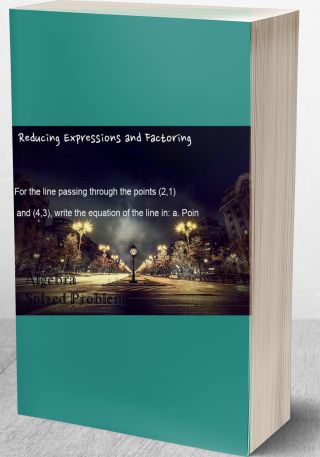The manager of the purchasing department of a large banking organization would like to develop a mod
Question: The manager of the purchasing department of a large banking organization would like to develop a model to predict the amount of time it would take to process invoices. Data were collected from a sample of 30 days with the following results:
| Day | Number of invoices processed | Amount of Time (hours) | Day | Number of invoices processed | Amount of Time (hours) |
| 1 | 149 | 2.1 | 16 | 169 | 2.5 |
| 2 | 60 | 1.8 | 17 | 190 | 2.9 |
| 3 | 188 | 2.3 | 18 | 233 | 3.4 |
| 4 | 19 | 0.3 | 19 | 289 | 4.1 |
| 5 | 201 | 2.7 | 20 | 45 | 1.2 |
| 6 | 58 | 1.0 | 21 | 193 | 2.5 |
| 7 | 77 | 1.7 | 22 | 70 | 1.8 |
| 8 | 222 | 3.1 | 23 | 241 | 3.8 |
| 9 | 181 | 2.8 | 24 | 103 | 1.5 |
| 10 | 30 | 1.0 | 25 | 163 | 2.8 |
| 11 | 110 | 1.5 | 26 | 120 | 2.5 |
| 12 | 83 | 1.2 | 27 | 201 | 3.3 |
| 13 | 60 | 0.8 | 28 | 135 | 2.0 |
| 14 | 25 | 0.4 | 29 | 80 | 1.7 |
| 15 | 173 | 2.0 | 30 | 29 | 0.5 |
a) Using the statistical package of your choice, run a linear regression and write the equation of the least squares line.
b) Interpret the estimated slope.
c) Find SSE, s2, and s.
d) Obtain a point estimate of the mean amount of processing time required on all days in which 150 invoices are to be processed.
e) Test the overall significance of the model at the 0.05 level.
f) Calculate a 95 percent confidence interval for b1. Interpret this interval.
g) Find a 95 percent confidence interval for the mean amount of processing time required on all days in which 150 invoices are to be processed.
h) Find a 95 percent prediction interval for the processing time required on an individual day in which 150 invoices are to be processed.
i) Find the total variation, the unexplained variation, and the explained variation.
j) Find and interpret r2, the simple coefficient of determination.
k) Find r, the simple correlation coefficient, and discuss why its sign is positive or negative.
Deliverables: Word Document



![[Solved] There are two different formulas or methods that can be used to calculate SS. a. Under what circums #26832 Hypothesis Testing](/images/downloads-images/featured/Statistics-question-6165.jpg)
![[Solved] You conducted a study to see if men and women differ in the ways they behave when lost wh #502 Other Statistics](/images/downloads-images/featured/Statistics-question-8290.jpg)
![[Solved] For X̄ the sample mean of an n-element random sample drawn from random variable whose variance i #6552 Hypothesis Testing - Chi Square Test](/images/downloads-images/featured/Statistics-question-20.jpg)

